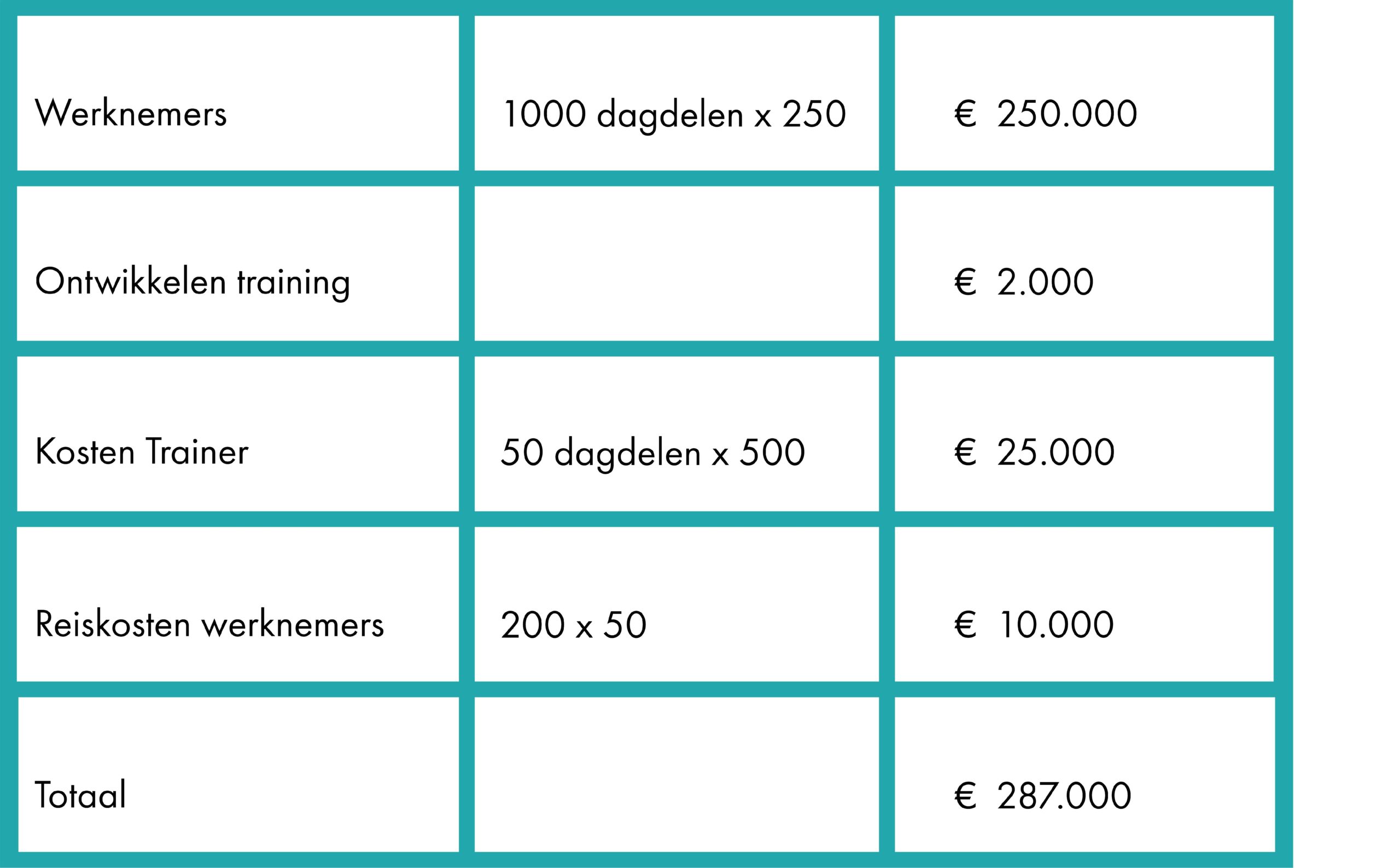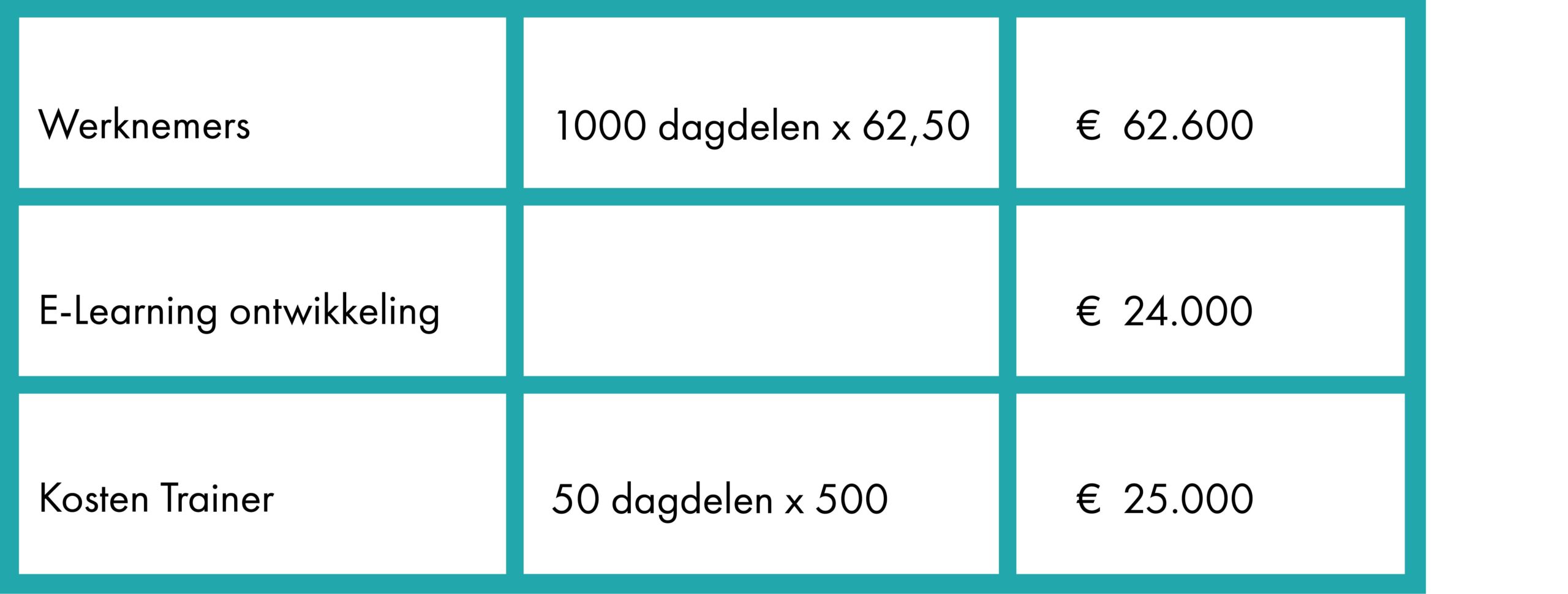ROI learning solution calculation example
To calculate the ROI (Return On Investment) of a learning solution, you must define the situation well. If you want to compare the ROI of e-learning versus classroom learning, you have different variables than when you compare learning versus non-learning. An intermediate solution will often be used, a blended-learning environment.
E-learning versus classroom learning
Suppose you have an organization of 1000 employees and everyone needs to be trained on Information Security.
Classroom training
Example: Information Security is a half day training and you can have up to 20 people in a class at a time. So you need 50 sessions. Fortunately, you have internal rooms and for the sake of simplicity we do not charge anything for this.
A trainer costs € 500 for half a day. An employee costs an average of € 250 for half a day (€ 62.50 per hour). About 200 of the 1000 employees work at a different location and have to travel with an average travel cost of € 50. Developing the training itself costs € 2000.

Class: € 287,000, or € 287 per employee.
E-learning
Half a day of classroom learning corresponds on average to one hour of e-learning. Developing an e-learning module can be quite expensive. Depending on the complexity, media used, duration, etc. On average it takes about 200 hours (source: ChapmanAlliance) to make an e-learning of one hour. With an hourly rate of € 120, this amounts to € 24,000

E-Learning: € 86,600, or € 86,60 per employee.
As you can see this is a saving of € 200,400. Quite considerable for a single course! In addition to this financial saving, there is also a difference in the efficiency of the two methods. Research has shown that e-learning has a higher retention rate than classroom learning. According to the Gartner Group, e-learning retention is twice as high as classroom learning. In addition to the already calculated financial advantage, this is of course a huge additional advantage.

To learn or not to learn?
This is much more difficult. How do you calculate what learning, regardless of the method, yields? Sometimes it is just the organization that determines that something must be learned, regardless of the cost. Courses such as information security, sexual harassment in the workplace etcetera are simply mandated by the organization. The ROI cannot be expressed in money; it is about successfully reaching a sentimental value.
Other types of training can be used in an ROI analysis. Training as a “New Employee” will hopefully make employees more productive. A training such as “Successful Selling” will hopefully increase sales. And that can be expressed in money.
You need control groups for that. You can do this, for example, by having a number of salespeople (the control group) to follow the “Successful Selling” training. You know what their sales performance was before the training. After the training, you check whether those performances have changed. Now suppose performance is up 5%. Then you can assume that if you have all salespeople follow this training, the total sales will increase by 5%.
If your turnover was 10 million, the expected turnover will increase by € 500,000. You offset the costs of developing and delivering the training and you have your ROI. You can use the same kind of calculation as in the first example.


Recent Comments